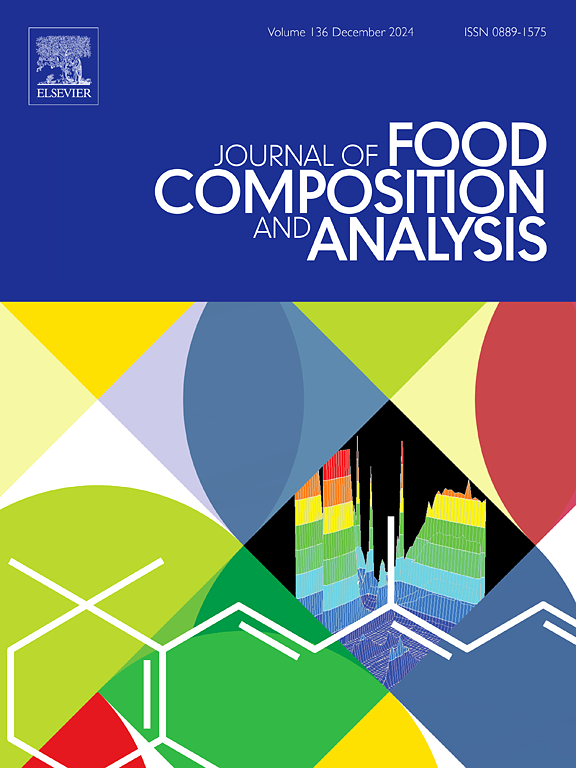Enhancing soy yogurt texture and functionality with mealworm protein
IF 4
2区 农林科学
Q2 CHEMISTRY, APPLIED
引用次数: 0
Abstract
Plant-based yogurts are increasingly studied owing to the rising demand for dairy alternatives. This study evaluated the effects of incorporating 5 % mealworm protein (MP) into soy yogurt (SMY) and compared the physicochemical, rheological, and flavor properties of plain soy yogurt (SY) and milk yogurt (control). After 8 h of fermentation, the yogurt had a pH below 4.6. MP reduced the titratable acidity (0.66 %) compared to that of control (1.03 %) and was similar to that of SY (0.60 %). SY and SMY (2.77 ×106 CFU/mL) exhibited lower Lactobacillus counts than the control (5.97 ×106 CFU/mL). SMY improved the gel properties of SY by lowering its high G′ and firmness. SMY demonstrated superior structural stability, enhanced water-holding capacity, and reduced syneresis (52.77 % and 11.35 %) compared to SY (50.17 % and 13.41 %) and control (50.17 % and 19.51 %). SMY showed enhanced antioxidant properties, with higher isoflavones (32.80 mg/g) and polyphenol content (0.36 GAE/g) and a significantly reduced DPPH IC50 (115.79 mg/mL) compared to SY (20.89 mg/g, 0.35 GAE/g, and 244 mg/mL). E-nose analysis revealed nutty aldehyde flavors in SMY, while fermentation removed mealworm-related odors, and e-tongue results showed increased sourness, umami, and bitterness. These findings indicate that MP incorporation is a promising plant-based dairy alternative.
求助全文
约1分钟内获得全文
求助全文
来源期刊

Journal of Food Composition and Analysis
工程技术-食品科技
CiteScore
6.20
自引率
11.60%
发文量
601
审稿时长
53 days
期刊介绍:
The Journal of Food Composition and Analysis publishes manuscripts on scientific aspects of data on the chemical composition of human foods, with particular emphasis on actual data on composition of foods; analytical methods; studies on the manipulation, storage, distribution and use of food composition data; and studies on the statistics, use and distribution of such data and data systems. The Journal''s basis is nutrient composition, with increasing emphasis on bioactive non-nutrient and anti-nutrient components. Papers must provide sufficient description of the food samples, analytical methods, quality control procedures and statistical treatments of the data to permit the end users of the food composition data to evaluate the appropriateness of such data in their projects.
The Journal does not publish papers on: microbiological compounds; sensory quality; aromatics/volatiles in food and wine; essential oils; organoleptic characteristics of food; physical properties; or clinical papers and pharmacology-related papers.
 求助内容:
求助内容: 应助结果提醒方式:
应助结果提醒方式:


